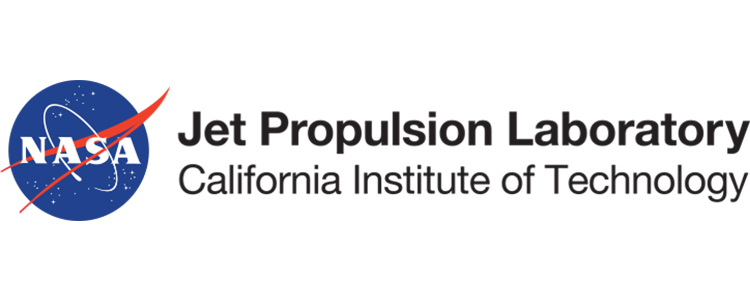
Role in the IGS
JPL hosts the IGS Central Bureau.
JPL also hosts an IGS analysis center (AC) which currently contributes rapid, final, and reprocessed GPS-only orbit and clock products to the IGS. JPL’s contributions are created using the multi-technique (GNSS, SLR, VLBI, DORIS) and multi-constellation GipsyX software processing package, which replaced GIPSY-OASIS in 2017. The JPL AC is currently in the process of transitioning to produce GPS+Galileo orbit and clock products and hopes to start delivering these to the IGS in the near future. JPL contributes to several IGS working groups and currently has an elected member of the IGS governing board.
Finally, JPL also hosts an Ionospheric Associate Analysis Centre (IAAC) contributing daily final and rapid Global Ionospheric Maps to the IGS Ionospheric Committee.
Institution Description
The Jet Propulsion Laboratory is a unique national research facility that carries out robotic space and Earth science missions. JPL helped open the Space Age by developing America’s first Earth-orbiting science satellite, creating the first successful interplanetary spacecraft, and sending robotic missions to study all the planets in the solar system as well as asteroids, comets and Earth’s moon. In addition to its missions, JPL developed and manages NASA’s Deep Space Network, a worldwide system of antennas that communicates with interplanetary spacecraft.
JPL is a federally funded research and development center managed for NASA by Caltech. From the long history of leaders drawn from the university’s faculty to joint programs and appointments, JPL’s intellectual environment and identity are profoundly shaped by its role as part of Caltech.
Today JPL continues its world-leading innovation, implementing programs in planetary exploration, Earth science, space-based astronomy and technology development, while applying its capabilities to technical and scientific problems of national significance. JPL technology developed to enable new missions is also applied on Earth to benefit our everyday lives.

Role in the IGS
EarthScope Consortium (formerly UNAVCO) support to the International GNSS Service (IGS) Central Bureau (IGSCB) includes contributing GNSS data for 14 IGS stations, troubleshooting of data and metadata flow, and identification and correction of metadata issues and metadata management through the use of the IGS Site Log Manager system. Other support includes working with GNSS manufacturers to update the rcvr_ant.tab and antenna.gra files as well as supporting the IGS Network Coordinator role with general inquiries sent to the IGSCB. In the past, EarthScope Consortium has participated in the IGS Executive Committee, IGS Governing Board, Infrastructure Committee, the RINEX Working Group, and the IGS Antenna Working Group.
Institution Description
EarthScope Consortium, formed by the merger of UNAVCO and IRIS, operates the U.S. National Science Foundation’s GAGE and SAGE Facilities. The NSF GAGE Facility supports cutting-edge geoscience discoveries, applications, and education with geodesy for broad societal benefit. NSF GAGE provides the foundation and infrastructure to support research on every continent across a broad spectrum of geosciences, facilitated by data, engineering, education, and community services. NASA supports NSF GAGE operations of the Global GNSS Network (GGN) and the activities of the International GNSS Service Central Bureau.
NSF SAGE is a distributed, multi-user national facility providing state of-the-art seismic and related geophysical instrumentation and services to support research and education in the geosciences. This integrated set of facility capabilities enables advances in our understanding of Earth structure and dynamics, earthquakes and volcanic eruptions, and interactions between the solid Earth, hydrosphere, and atmosphere.
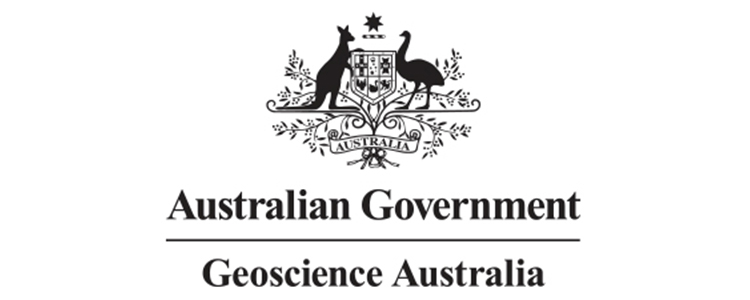
Role in the IGS
Geoscience Australia, through it’s Positioning Australia program, supports the IGS through its contribution of data from its GNSS network covering the Australia-Asia Pacific region through to Antarctica, the coordination of the APREF region reference frame and geodetic time series, robotic absolute antenna calibration, the leadership and development of open standards through GeodesyML, and currently holds the responsibility of being the analysis center coordinator which produces the official combined IGS products.
Institution Description
Geoscience Australia is Australia’s pre-eminent public sector geoscience organisation. We are the nation’s trusted advisor on the geology and geography of Australia. We apply science and technology to describe and understand the Earth for the benefit of Australia.
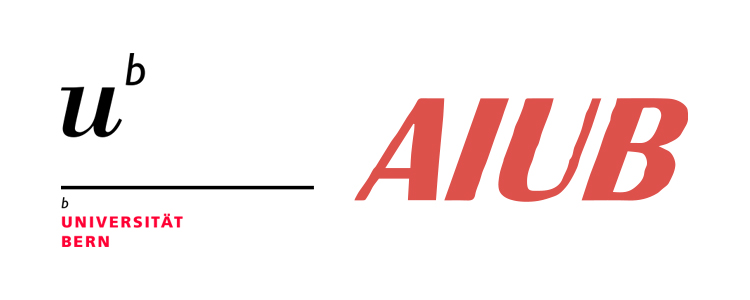
Role in the IGS
The Astronomical Institute of the University of Bern (AIUB) hosts the CODE analysis center (AC) of the IGS. It is one of the leading ACs since the beginning contributing to the operational ultra-rapid, rapid, final series since the beginning of the IGS. The computation is mainly performed on the high-performance computing system of the University of Bern using the Bernese GNSS Software package.
A strength of the CODE AC are developments in the field of orbit models (e.g., the ECOM series is used by many of the AC groups). Since 2003 operational CODE products are computed based on GPS and GLONASS measurements; in 2019 Galileo has been added to the legacy rapid and ultra-rapid contributions. With this strong background in multi-GNSS processing, CODE is supporting the MGEX pilot project of the IGS with a five-system solution, including GPS, GLONASS, Galileo, BeiDou, and QZSS.
Members of the AIUB team contribute to various IGS working groups. In particular the chair of the Antenna Working Group is currently located at AIUB. Furthermore, AIUB members have been elected to the Governing Board and to the IGS Executive Committee.
Institution Description
The Astronomical Institute belongs to the Faculty of Philosophy and Natural Sciences of the University of Bern. It is composed of three research groups, all working in the field of satellite geodesy, fundamental astronomy, and celestial mechanics. The institute operates the Swiss Optical Ground Station and Geodynamics Observatory Zimmerwald, which is equipped with a multi-purpose astronomical instrument also used for Satellite Laser Ranging (SLR).
The satellite geodesy research group has a well-established experience on geodetic applications of Global Navigation Satellite Systems (GNSS), in particular on precise orbit determinations of GNSS satellites and low earth orbiting satellites (LEO) tracked by GNSS. A specific focus is also put to satellites dedicated to gravity field determination. In this context AIUB is hosting the COST-G coordination, a product center of IAG’s International Gravity Field Service (IGFS) combining time-variable gravity field solutions from various analysis centers. In addition, the research group is active in processing SLR measurements for various purposes.
The research group on optical astronomy is using and advancing various techniques to detect, monitor, characterize and catalog space debris.
Members of the AIUB team contribute to various working groups. In particular the president of IAG’s Commission-2 (Gravity Field) is currently located at AIUB. Furthermore AIUB members have been elected to the IAG Executive Committee and to the GGOS Executive Committee.

Role in the IGS
The Center for Orbit Determination in Europe (CODE) acts as one of the global analysis centers (ACs) of the IGS since 1992, the beginning of the IGS pilot phase. The operational products are generated at AIUB whereas the computations for the reprocessing campaigns are performed at IAPG/TUM. The Bernese GNSS Software is used for all activities at CODE.
Apart from GNSS satellite orbit, receiver and satellite clock correction including code and phase biases (e.g., needed for ambiguity resolution in a PPP processing), ERP, coordinate products also troposphere corrections and various ionosphere models are computed and made available. Since May 2003 the operational CODE solution is generated as a combined GPS and GLONASS solution. In September 2019 CODE started to include Galileo to the operational rapid and ultra-rapid series.
Members from the institutions of the CODE consortium support numerous of the IGS working groups, chair two of the working groups, contribute to the IGS Governing Board and Executive Committee.
Institution Description
The Center for Orbit Determination in Europe (CODE) is a joint venture between
- the Astronomical Institute of the University of Bern (AIUB, Bern, Switzerland)
- the Swiss Federal Office of Topography (swisstopo, Wabern, Switzerland),
- the Federal Agency for Cartography and Geodesy (BKG. Frankfurt a. M., Germany), and
- the Institute for Astronomical and Physical Geodesy, Technical University of Munich (IAPG/TUM, Munich, Germany).
The collaboration within the CODE consortium goes much beyond the IGS activities. It includes activities in the frame of EUREF – the European densification of the global reference frame – but also other space geodetic techniques like Very Long Baseline Interferometry (VLBI) and Satellite Laser Ranging (SLR), e.g., where the consistency of the BKG-contribution to the ILRS is made as consistent as possible to the CODE IGS solution.
The two contributing national mapping agencies use the CODE products and the software for their own reference frame maintenance activities. A consistent use of products and software enables a consistent alignment of international, European, and national reference frames. On the other hand, the academic institutions get input for their research activities
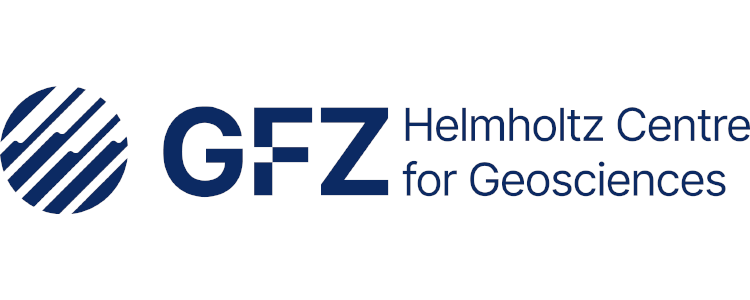
Role in the IGS
Since 1994, we have been operating GNSS stations of the global tracking network of the IGS. Nowadays all stations are capable of tracking multi-GNSS and stream data in real-time. The IGS Analysis Center at GFZ contributes to all processing lines since the start of the service in 1994. In recent years we established also analysis capability within the IGS real-time, the MGEX, and the TIGA activities. We are contributing to the IGS governing structure by hosting the Chair of the Infrastructure Committee, the chair of the TIGA Working Group as well as one of two Analysis Center Representatives and we are participating in several IGS working groups.
Institution Description
The GFZ is Germany’s national research center for the solid Earth and its interactions with atmosphere, oceans, hydrosphere and cryosphere and is active in all geoscientific disciplines. Situated at the Telegrafenberg in Potsdam, GFZ continues the long-standing tradition in global Geodesy since F. R. Helmert.

Role in the IGS
The IGN hosts a global IGS data center since 1994. The IGN has been responsible for the IGS reference frame working group since 2010, generating the official IGS station position and ERP products including the IGS contributions to the successive ITRF releases, and defining the successive IGS reference frames. The IGN operates 8 multi-GNSS IGS stations in mainland France and overseas territories. In collaboration with CNES, the IGN finally operates a global network of real-time, multi-GNSS stations (REGINA), which includes 34 IGS stations.
Institution Description
The French National Institute of Geographic and Forest Information (IGN) is a public administrative establishment placed under the joint authority of the Ministries in charge of ecology and forestry. IGN is the reference public operator for geographic and forest information in France. The aim of the institute is to produce, collect, qualify and disseminate sovereign geographic and forest data essential to the implementation of public policies.

Role in the IGS
The Federal Agency for Cartography and Geodesy (BKG) contributes with its technical profile to several activities and products of the International GNSS Service (IGS), in particular: Regional Data Centre (1996 – present), GLONASS Analysis Centre (1999 – 2012), co-chair of IGS Real-Time Working Group (2002 – 2014), chair of IGS Real-Time Working Group (2015 – 2019), member of the Infrastructure Committee, and member of the Governing Board.
Additionally, a number of global permanent stations maintained by BKG provide their observations to IGS, covering not only GNSS, but also other satellite techniques like VLBI or SLR from the following observatories: Wettzell in Germany, O’Higgins in Antarctica and AGGO in Argentina.
Institution Description
The Federal Agency for Cartography and Geodesy (BKG) is a German national competence center for Geodesy and Geoinformation. The main geodetic tasks of BKG include the provision of geodetic reference data and products and basic spatial data for the needs of the German Federal Government, national administrative, economic and scientific sectors as well as for the general public. Furthermore, BKG represents the German national interests on the international field of geodesy and contributes with its own geodetic infrastructure to the global geodetic reference frame (GGRF).
BKG, with its approx. 350 employees (status end of 2020), is organized in three technical departments, two concerning Geodata / Geoservices and one for Geodesy. The Geodesy department with its locations in Frankfurt am Main, Leipzig and Wettzell is responsible for the provision and maintenance of the geodetic reference networks of the Federal Republic of Germany. These activities include:
• Geodetic infrastructure and observatories for the collection of geodetic data,
• Data and analysis centers for geodetic data and products, combination of geodetic products
• Realization of the geometric reference systems for the acquisition of the geometry of the Earth’s surface,
• Realization of the gravimetric reference systems as a basis for the acquisition of the Earth’s gravity field,
• Realization of the height and levelling reference systems,
• Determination of the Earth’s rotation parameters for the description of the Earth’s movement in space (hosting the IERS Central Bureau),
• Realization of the national integrated geodetic reference frame,
• National contribution to the European GNSS Galileo and its reference frame.
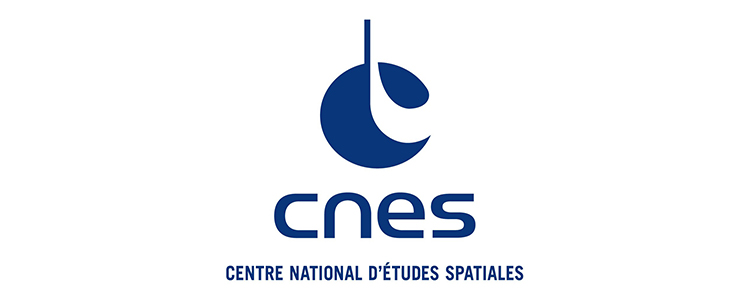
Role in the IGS
CNES has participated in the densification of the network of permanent stations since the start of the IGS and more intensively since 2012 with the multi-GNSS and Real Time REGINA global network (https://regina.cnes.fr) in collaboration with IGN. REGINA main Operational Data Center is operated by CNES in Toulouse premises.
In 2010, CNES also started providing IGS Real Time (RT) and Post-Processed (PP) products via two dedicated analysis centers:
- the RT-AC activities are part of the IGS RT service pilot project and aim to demonstrate the feasibility of a multi-GNSS PPP-AR service (http://www.ppp-wizard.net)
- the PP-AC focuses on the calculation of the highest quality geodetic products for scientific applications. These activities are carried out with the support of the CLS company (https://www.cls.fr) as a contribution from CNES to GRGS (https://grgs.obs-mip.fr).
Several CNES and CLS experts also contribute to various IGS working groups.
Institution Description
Founded in 1961, the Centre National d’Etudes Spatiales (CNES) is the government agency responsible for shaping and implementing France’s space policy in Europe. Its task is to invent the space systems of the future, bring space technologies to maturity and guarantee France’s independent access to space.
CNES is a key player in Europe’s space program, and a major source of initiatives and proposals that aim to maintain France and Europe’s competitive edge.
It conceives and executes space programs with its partners in the scientific community and industry, and is closely involved in many international cooperation programs—the key to any far-reaching space policy.
Through its ability to innovate and its forward-looking vision, CNES is helping to foster new technologies that will benefit society as a whole, focusing on access to space, science, Earth observation, telecommunications and Defense.
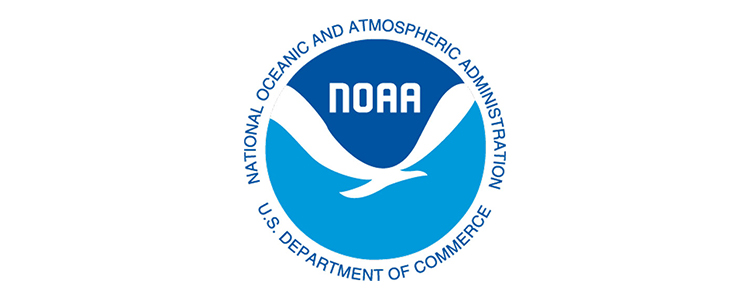
Role in the IGS
Analysis Center. Contributes data through NASA CDDIS to the IGS.
Institution Description
NOAA’s National Geodetic Survey is responsible to define, maintain and provide access to the U.S. National Spatial Reference System (NSRS). Definition is by mathematical relationship to the ITRS. Maintenance is through deformation models. Access is through the ~1600 station NOAA CORS Network (NCN) and the Online User Positioning Service (OPUS).

Role in the IGS
The GNSS research center of Wuhan university (WHU) hosts the WHU analysis center (AC) and WHU data center (DC) of the IGS. In recent years, we also established analysis capability within the IGS real-time, the MGEX. All the products are generated with the Positioning And Navigation Data Analyst (PANDA) Software package developed at WHU.
Since 2012, operational WHU products have been generated as a combined GPS and GLONASS solution; in 2013 BDS was added to the legacy rapid and final contributions; up to now, WHU is supporting the MGEX pilot project of the IGS with a five-system solution, including GPS, GLONASS, Galileo, BDS, and QZSS. Several WHU experts contribute to different IGS working groups, and WHU members have been elected to the Governing Board.
Institution Description
Wuhan University (WHU) is a comprehensive and key national university directly under the administration of the Ministry of Education. It is also one of the “211 Project” and “985 Project” universities with full support in the construction and development from the central and local government of China.
Since its establishment, Wuhan University has cultivated more than 300 thousand professional talents in various occupations, among whom there are over 100 members of the Chinese Academy of Science and the Chinese Academy of Engineering. They have made great contribution to the national construction and social advancement. The remarkable achievements of Wuhan University have won itself an extensive international reputation. In 1999, the world renowned journal Science listed Wuhan University as one of the most prominent institutions of higher education in China.

Role in the IGS
Natural Resources Canada (NRCan) has been a contributor to the IGS since the 1992 IGS pilot phase and provided the initial Analysis Centre Coordination. Today NRCan contributes GNSS data from thirty-five stations Canada wide. These stations are operated by the Canadian Geodetic Survey (CGS) in Ottawa and the Canadian Hazards Information Service (CHIS) in Sidney, British Columbia. The NRCan Analysis Centre at CGS contributes final, rapid, ultra rapid and real-time GNSS products under the legacy label EMR (Energy Mines and Resources), NRCan’s former name. NRCan has held several roles for the IGS including Analysis Centre Coordinator, Reference Frame Coordinator, Governing Board Network representative and working group chairpersonships (Real-Time, RINEX and currently PPP-AR). NRCan scientists and engineers are active in working groups and committees including Reference Frames, Ionosphere, Real-Time, RINEX and Infrastructure.
Institution Description
Natural Resources Canada (NRCan) is the department of the federal Government of Canada responsible for natural resources, energy, minerals and metals, forests, earth sciences, mapping and remote sensing. It was created in 1995 by amalgamating Department of Energy, Mines and Resources, and Department of Forestry. NRCan works to ensure the responsible development of Canada’s natural resources, including energy, forests, minerals and metals. NRCan also uses its expertise in earth sciences to build and maintain an up-to-date knowledge base of our landmass and resources.
NRCan’s Canadian Geodetic Survey (CGS) is responsible to define, maintain, improve and facilitate access to the Canadian Spatial Reference System (CSRS), which establishes the reference for latitude, longitude, height and gravity in Canada. The CSRS provides surveyors, geoscientists, and other professionals with an accurate and consistent reference system, enabling the integration and interoperability of spatial data and applications. CGS provides access to both the CSRS and the IGS realization of the International Terrestrial Reference System through the Canadian Spatial Reference System Precise Point Positioning (CSRS-PPP) service.
NRCan’s Canadian Hazards Information Service (CHIS) is responsible to monitor and provide hazard information and products on an ongoing basis and in response to emergency situations involving earthquakes, tsunamis, volcanic eruptions, landslides, geomagnetic storms and radiological / nuclear incidents.
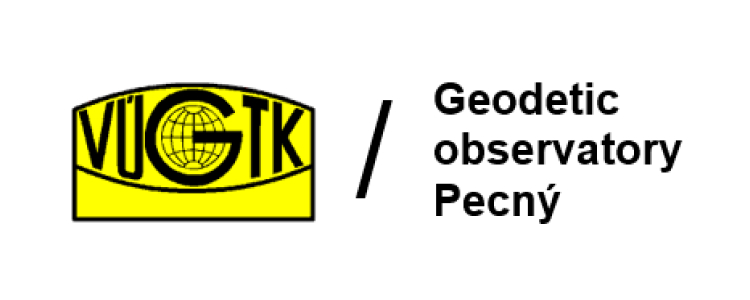
Role in the IGS
Geodetic Observatory Pecný (GOP) operated as an IGS analysis centre during 2004-2015 providing ultra-rapid orbits for GPS and GLONASS satellites and monitoring the official IGS predicted products in real time. The service has been interrupted due to the lack of funding available for an operational activity. Since that time, a priority has to be given to project-related contributions to the IGS WGs – troposphere (GOP-TropDB for the troposphere multi-technique evaluation, Troposphere SINEX definition), multi-GNSS (data, quality control software), and real-time (data, PPP software, IGS-SSR prototype decoder, real-time troposphere products). The GOP is providing multi-GNSS data from a triple station, and participated in all the EUREF re-processing for the IGS network densification in Europe.
Institution Description
Geodetic Observatory Pecný (GOP) is a part of the Research Institute of Geodesy, Topography and Cartography (RIGTC) a unique public institute in the Czech Republic established in 1954 for a geodetic research. It is involved in the fundamental and applied research in these branches of geodesy: 1) space geodesy (GNSS and DORIS techniques), 2) Earth’s gravity field, 3) mathematical modelling (potential theory), 4) satellite altimetry, and 5) gravimetry.
Since 1990, GOP gained a long-term experience in high accuracy GNSS data analyses and the software development. GNSS parameters are continuously estimated for various purposes: stations coordinates (reference frame maintenance), tropospheric path delays (water vapour monitoring), precise satellite orbits and clocks (precise products), Earth’s rotation parameters, and others. The G-Nut software development library has been initiated in 2011, and licensed to the G-Nut Software s.r.o. in 2018 to guarantee a sustainable maintenance and enhancements in future. The G-Nut/Anubis software has been provided as an open-source to the community since 2013.
Products of the GOP analysis centre to scientific services includes contributions to IGS (International GNSS Service), EUREF (European Reference Frame), EPOS (European Plate Observing System), E-GVAP (the EUMETNET EIG GNSS Water Vapour Programme), ICET (International Centre for Earth Tides), BGI (International Gravimetric Bureau), IDS (International DORIS Service), and IGFS (International Gravity Field Service).
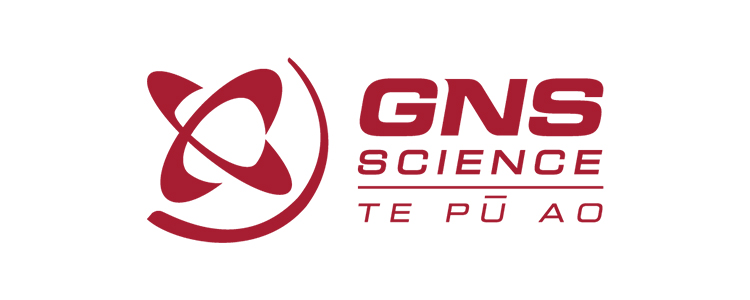
Role in the IGS
GNS Science – Te Pū Ao, through its partnership with Toitū Te Whenua Land Information New Zealand, contributes to IGS by providing data from 7 continuously operating GNSS stations in Aotearoa New Zealand, Antarctica and the South West Pacific. GNS Science – Te Pū Ao, is an Associate Member of IGS and is part of the Governing Board and IGS Representative to the IERS Directing Board.
Institution Description
GNS Science – Te Pū Ao, is New Zealand’s leading provider of Earth, geoscience and isotope research and consultancy services. Its purpose is to understand natural Earth system processes and resources, and to translate these into economic, environmental and social benefits.
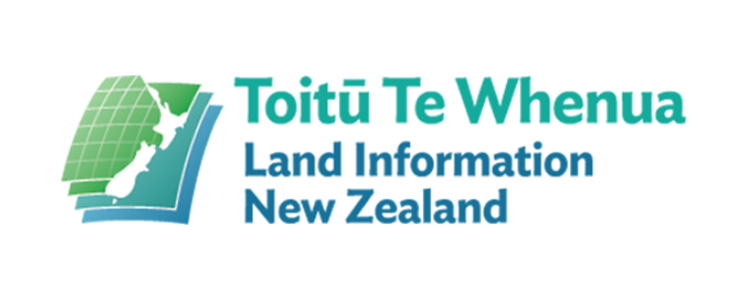
Role in the IGS
Toitū Te Whenua Land Information New Zealand, in partnership with GNS Science – Te Pū Ao, provides data from 7 continuously operating GNSS stations in New Zealand and Antarctica.
We also conduct site ties to connect GNSS stations to VLBI and DORIS, at sites where two observing techniques are co-located.
Institution Description
Toitū Te Whenua Land Information New Zealand is the Government’s lead agency for property and location information, Crown property and managing overseas investment – working across land, sea, data and regulatory areas.
Our responsibilities include managing land titles, geodetic and cadastral survey systems, topographic information, hydrographic information, managing Crown property and supporting government decision-making around foreign ownership.

Role in the IGS
Lantmäteriet, and especially the SWEPOS GNSS network, has been contributing to IGS the last three decades by providing data from selected stations in the SWEPOS network. Most contributions go through the EUREF Permanent GNSS Network, EPN, where Lantmäteriet is one of its Analysis Centers in collaboration with the Onsala Space Observatory at Chalmers University of Technology.
Institution Description
Lantmäteriet is The Swedish Mapping, Cadastral and Land Registration Authority. The responsibility includes national registry of real estate and its ownership and mortgage, make geodata available, and being the national geodetic authority.
The SWEPOS GNSS networks includes almost 500 CORS used for scientific research of the Fennoscandia Post Glacial Rebound, as well as for centimeter level real time Network-RTK service to the user community. Lantmäteriet is also an analysis center of near real time analysis of water vapor content in the atmosphere for the E-GVAP.

Role in the IGS
The Norwegian Mapping Authority provides four stations to the IGS network: TRO100NOR, NYAL00NOR, NYA100NOR, NABG00NOR.
Institution Description
From ocean to land, and from outer space to the deepest ocean floors. The Norwegian Mapping Authority’s field of work is extensive and diverse. Geographical and ratified information are the common denominators when it comes to the tasks performed by the Norwegian Mapping Authority. This might include datasets that provide the basis for a map, place names, property boundaries or registered rights associated with a specific place. We collate, systemise, manage and communicate public geographical information.
The Norwegian Mapping Authority’s geodetic division is responsible for national geodetic information on which all positioning, measuring, mapping and earth observation is based. The Institute also measures and establishes a national reference frame for coordinates, geoid reference, height reference and post-glacial rebound.
The Norwegian Mapping Authority operates a nationwide system of accurate, satellite-based GNSS positioning. The positioning services can determine a position down to the nearest centimetre (Cpos) and are useful in areas such as the construction industry in order to accurately define where to excavate. These services are also useful in determining property boundaries.
The Norwegian Mapping Authority’s geodetic Earth observatory at Ny-Ålesund on Svalbard plays a key role in work on reference frames and global collaboration on monitoring the planet.

Role in the IGS
We operate Singapore’s national CORS network SiReNT (Singapore Satellite Positioning Reference Network), as well as the NTUS IGS station, keeping it running and contributing to the IGS network.
Institution Description
The Singapore Land Authority is a government agency that manages state land and properties, performs regulatory functions for property transaction, drives geospatial adoption and operates geomatics infrastructure and provide its services.
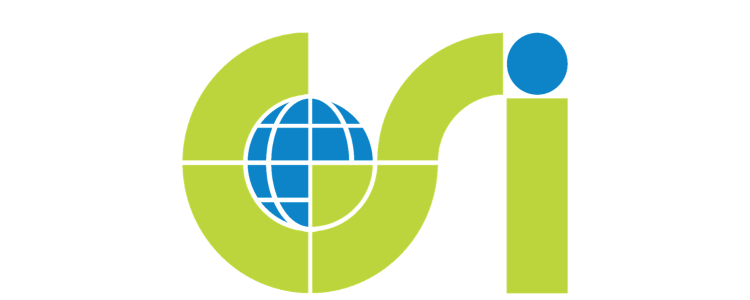
Role in the IGS
The Geospatial Information Authority of Japan (GSI) has operated the GNSS stations of the IGS global tracking network since 1994. GSI operates a total of eight IGS stations and provides data to the IGS on a daily basis.
GSI has been working as one of the global analysis centers (ACs) of the IGS in collaboration with the Japan Aerospace Exploration Agency (JAXA) since December 2023. GSI routinely generates JGX products using MADOCA software developed by JAXA and submits them to the IGS.
Institution Description
The Geospatial Information Authority of Japan (GSI) is the national organization responsible for surveying, mapping, and geospatial information management. We maintain and manage the national geodetic datum for ensuring accessibility to all kinds of geospatial information in Japan.
GSI was established as the office of Geography Department under the Ministry of Civil Service in 1869 and now utilizes VLBI, GNSS, and other geodetic observation techniques to realize and maintain the national geodetic datum. It also uses these techniques to contribute to the realization and maintenance of the Global Geodetic Reference Frame (GGRF) by participating in international initiatives such as IGS and IVS.
GSI’s national GNSS CORS network, GEONET (GNSS Earth Observation Network System), plays a pivotal role in providing sustained access to the national geodetic datum with dense spatial coverage. GNSS CORSs, located approximately 20km apart, routinely obtain daily coordinates and constantly monitor the crustal deformation. The crustal deformation data is essential for maintaining geodetic datums in countries, such as Japan, where tectonic movements are active. Observation data and coordinate time series are publicly available. They support research activities in a wide range of scientific fields, as well as socioeconomic activities such as public surveying and location-based services.
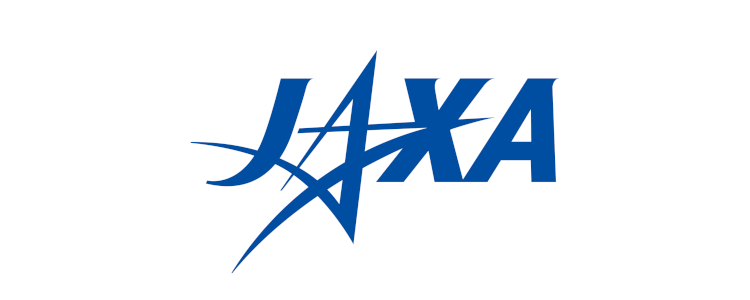
Role in the IGS
Japan Aerospace Exploration Agency (JAXA) had developed the first QZSS satellite (QZS-1) and supports development of subsequent satellites which are operated by Japanese Cabinet Office (CAO).
JAXA installed Multi-GNSS stations mainly in Asia Oceania region (MGM-net) and held workshop as the secretary of Multi-GNSS Asia (MGA) to promote GNSS usage in this area. Some of our stations including MGM-net provide observation data to IGS network.
JAXA started developing the precise GNSS orbit and clock determination software (MADOCA : Multi-GNSS Advanced Demonstration tool for Orbit and Clock Analysis) in 2011. The software supports Multi-GNSS (GPS, GLONASS, Galileo, BeiDou, and QZSS) and its products, including QZSS satellites, have been provided to IGS as MGEX products since 2017. From Dec. 2023, JAXA participates IGS analysis centers (ACs) with the Geospatial Information Authority of Japan (GSI) and is responsible for maintenance and improvement of MADOCA to generate IGS products (JGX).
Institution Description
JAXA is a core performance agency to support the Japanese government’s overall aerospace development and utilization. JAXA, therefore, can conduct integrated operations from basic research and development to utilization.

Role in the IGS
The National Geographic Information Institute (NGII) of the Republic of Korea, starting with the installation of the SUWN00KOR station in 1995, and later adding the SEJN00KOR station in 2012, has registered a total of 2 stations with the IGS network, providing data daily.
Institution Description
The National Geographic Information Institute (NGII) of the Republic of Korea is managing the Korean geodetic datum (operating 93 CORS stations), capturing time-series national land imagery information (such as aerial photography and orthophotos), producing national base maps, and creating various thematic information (including normal internet maps, POI, and braille maps). NGII also operates a ‘Geopatial Information Platform’ for public services, and conducts and maintains geographical name investigations.

Role in the IGS
ESA is a founding member and longstanding contributor to the International GNSS Service (IGS), providing technical expertise and resources to support various IGS activities and products. Through its Navigation Support Office located in Darmstadt, Germany, ESA operates one of the leading Analysis Centers (AC), contributing to the ultra-rapid, rapid, final, and reprocessing series of GNSS solutions. ESA’s processing is powered by the ESA Precise Navigation System (EPNS), which can handle all types of Space Geodetic Observations at the Combination On Observation Level (COOL). Additionally, ESA operates one of the IGS’s global data centers at the GNSS Science Support Centre (GSSC) and contributes GNSS data from ESA’s GNSS Observation Network (EGON).
ESA Navigation Support Office team members actively participate in and lead several IGS working groups, further advancing the accuracy of the GNSS-based solutions. This involvement ensures ESA’s access to the international terrestrial reference frame.
Institution Description
The European Space Agency (ESA) provides Europe’s gateway to space.
ESA is an intergovernmental organisation, created in 1975, with the mission to shape the development of Europe’s space capability and ensure that investment in space delivers benefits to the citizens of Europe and the world.
ESA has 23 Member States: Austria, Belgium, the Czech Republic, Denmark, Estonia, Finland, France, Germany, Greece, Hungary, Ireland, Italy, Luxembourg, the Netherlands, Norway, Poland, Portugal, Romania, Slovenia, Spain, Sweden, Switzerland and the United Kingdom. Latvia, Lithuania and Slovakia are Associate Members.
ESA has established formal cooperation with other four Member States of the EU. Canada takes part in some ESA programmes under a Cooperation Agreement.
By coordinating the financial and intellectual resources of its members, ESA can undertake programmes and activities far beyond the scope of any single European country. It is working in particular with the EU on implementing the Galileo and Copernicus programmes as well as with Eumetsat for the development of meteorological missions.
Add your organization below
IGS Contributing Organization Information
Please provide any information (to be posted on the new IGS.org website) about your organization and its contributions to the IGS.

